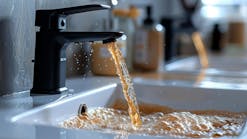Regulatory Update: Water Industry Regulatory Reflection on 2020
Kathleen Burbidge is global regulatory and government affairs manager for the Water Quality Association. Burbidge can be reached at [email protected].
In 2020, legislative session schedules were sometimes changed, and virtual meeting platforms were utilized for operation due to concern over the coronavirus pandemic. Addressing the virus became a major governmental priority. Early on, the water treatment and filtration industry were recognized as essential when there were stay-at-home orders and the industry engaged with government agencies on a range of issues surrounding the pandemic, including guidance on reopening buildings. Apart from the pandemic, the prominent focus on drinking water in the legislative and regulatory spheres included addressing unregulated contaminants, lead remediation and prevention, and assistance for private well owners.
A Focus on Emerging Contaminants & Lead Remediation
Across the U.S. at the state and federal levels, more than 215 pieces of proposed legislation were tracked dealing with drinking water. Breaking this down further, 37% covered unregulated contaminants. Mainly related to PFAS, but others were microplastics, hexavalent chromium, 1,4-dioxane, legionella, and 1,2,3-trichloropropane. The dominating theme was state consideration of their own enforceable maximum contaminant levels for public water systems in their state. Another large group of bills tracked, 35%, targeted lead in drinking water. The majority of which dialed in on testing and remediation at schools and childcare facilities. Some lead service line replacement programs also began to require the installation of at-home water filtration certified to remove lead to act as a final barrier to possible spikes in lead levels caused by the construction.
Along with legislators, state and federal regulatory agencies also worked in 2020 to address drinking water and leverage point-of-use (POU) and point-of-entry (POE) technologies. In California, the Safe and Affordable Funding for Equity and Resilience “SAFER” Program was established to help water systems provide safe, accessible, and affordable supply of drinking water to communities. Overseeing the program, the California Water Board estimates most systems with violations are small water systems serving less than 500 connections. POU and POE technologies are included as part of the solutions under SAFER and funding can be applied for initial installation and ongoing maintenance.
Tracking Federal Regulations & Legislation in 2020
Federally, the 2018 Farm Bill increased the authorized appropriation for the U.S. Department of Agriculture (USDA) Rural Decentralized Water Systems Grant Program. The program’s purpose is to improve access to safe, reliable drinking water, as well as sanitary conditions for households in rural areas. In 2020, the USDA finalized rulemaking related to this program, making POU and POE devices eligible for grant funds.
The U.S. EPA also continued operation through the pandemic. In February 2020, EPA called for public comments on its proposal for regulatory determination over eight contaminants, including its proposal to regulate PFOA and PFOS. This moves forward the EPA’s PFAS Action Plan. Inside the Action Plan, it addressed concerns over detection of PFAS in drinking water and stated, “If you find PFAS in your drinking water, certain PFAS can be reduced or removed through the use of in-home point-of-use or point-of-entry water filters. It is important to keep in mind that any in-home treatment device should be certified by an independent party.”
Later in the summer, EPA published its final action on perchlorate. The agency determined it will not regulate perchlorate under the Safe Drinking Water Act.
Most recently, in the fall, EPA published the final rule on the Use of Lead-Free Pipes, Fittings, Fixtures, Solder, and Flux for Drinking Water, often shortened to the “Lead-Free” rule. The scope includes products in contact with drinking water and will require companies with 10 or more employees to demonstrate product compliance through certification from an ANSI-accredited third-party certification body, like WQA, NSF International or IAPMO. The effective date for the certification requirement element is three years after the final rule publication date. The agency said manufacturers introducing new products during the next three years will still need to comply with the weighted average lead content requirements; however, certification by an ANSI-accredited certification body will not be required until September 1, 2023. Small businesses with fewer than 10 employees or any business, for the purpose of making a custom fabrication, may elect to self-certify in lieu of obtaining certification from an ANSI-accredited third-party certification body.
As this article is being written, we are awaiting the EPA’s publication of its final revisions to the Lead and Copper Rule. Public comments on the proposed revisions were collected in early 2020. There are two main changes from the current rule to highlight within the proposal. The action level for lead in drinking water will remain at 15 parts per billion (ppb) and a new trigger level will be added at 10 ppb. Following the testing procedures for public water systems laid out in the rule, when lead is detected above 10 ppb, the ‘trigger level’ will require additional planning, monitoring and treatment. Also, proposed in the agency’s revisions to the rule is to allow community water systems serving less than or equal to 10,000 people and all non-transient non-community water systems to elect to maintain POU devices certified to remove lead in place of corrosion control treatment.
As we enter 2021, connecting with local, state and federal representatives to talk about the drinking water treatment and filtration industry and share individual stories will help provide education on solutions to drinking water issues. Officials are setting up meetings virtually and want to spend time talking to constituents. By continuing to engage with legislators and regulators, it reminds them the industry is here as a resource with reliable technologies and water professionals ready to assist when needed.



